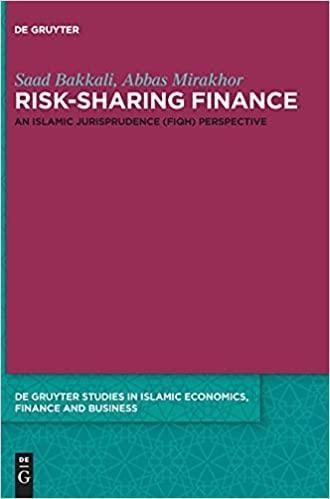Question
1a)When retained earnings are exhausted, the MCC breaks upward. What happens if the firm continues to raise capital after that? Does the MCC remain flat
1a)When retained earnings are exhausted, the MCC breaks upward. What happens if the firm continues to raise capital after that? Does the MCC remain flat or move further upward? In either case, why?
Question 1b)
Which is incorrect in regard to a firms cost of capital?
|
| It is the risk adjusted discount rate that is appropriate for all projects under consideration by the firm. |
|
| It is the average rate for using the firms funds. |
|
| It is the opportunity cost of using the firms funds. |
|
| It is the minimum rate of return a project must generate to warrant consideration by management. |
Question 1c)
Why should the debt portion of the WACC be adjusted for tax?
|
| Because the interest paid on debt is not taxable at the firm level. |
|
| Because the interest paid on debt is not taxable at the investor level. |
|
| Because all components of the WACC are not taxable. |
|
| Because the principle paid on the debt is not taxable at the firm level. |
Question 1d)
The weighted-average cost of capital
|
| blends the returns required by all suppliers of funds. |
|
| incorporates the firm's capital structure in its calculation. |
|
| is virtually never lower than the cost of debt nor higher than the cost of equity. |
|
| all of the above |
Question 1e)
Which of the following is not a component used in calculating the cost of capital?
|
| the cost of short-term debt |
|
| the cost of long-term debt |
|
| the cost of retained earnings |
|
| the cost of preferred stock |
|
| the cost of common stock |
Question 1f)
The WACC is used in evaluating newly proposed capital budgeting projects. It should therefore be calculated using capital component costs and a capital structure
|
| based on the capital on the firm's books because that's the capital it already has and will use to support new projects |
|
| based on conditions the firm will encounter when raising new capital in the next year because that's the capital it will use to support new projects |
|
| based on existing capital on the books because both old and new projects have to be supported |
|
| based on existing equity but new debt amounts and costs |
Question 1g)
The cost of capital can be described best as the:
|
| rate a firm pays for the use of invested funds |
|
| the minimum return required of capital budgeting projects that are about as risky as the firm |
|
| either of the above |
|
| none of the above |
Step by Step Solution
There are 3 Steps involved in it
Step: 1

Get Instant Access to Expert-Tailored Solutions
See step-by-step solutions with expert insights and AI powered tools for academic success
Step: 2

Step: 3

Ace Your Homework with AI
Get the answers you need in no time with our AI-driven, step-by-step assistance
Get Started


